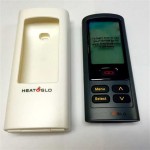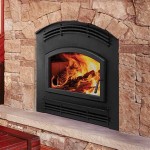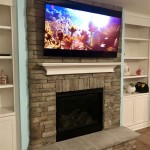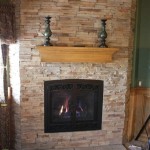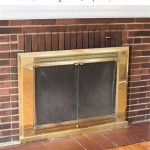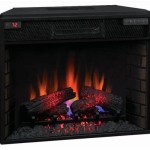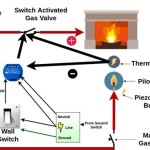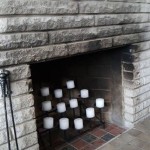How To Make An Open Fireplace More Efficient
Open fireplaces, while aesthetically pleasing and capable of providing supplemental heat, are notoriously inefficient. A significant portion of the heat generated escapes up the chimney, negating much of the intended warming effect. Furthermore, the draw of the chimney can actually pull heated air from the rest of the house, further decreasing overall energy efficiency. Improving the efficiency of an open fireplace requires a multi-faceted approach, addressing factors such as minimizing heat loss, maximizing heat radiation, and ensuring proper combustion.
The inefficiency of an open fireplace stems primarily from the physics of heat transfer and combustion. The simple design allows for a rapid exchange of air, often creating a strong draft that carries the majority of the heat directly up the chimney. This process not only wastes the heat generated but also contributes to a negative pressure within the home, leading to cold drafts from other areas.
Several strategies can be employed to mitigate these inefficiencies and transform an open fireplace into a more effective heating source. These strategies range from simple, low-cost adjustments to more significant investments. The optimal approach will depend on factors such as budget, frequency of fireplace use, and desired level of energy savings.
Minimize Heat Loss Up the Chimney
The primary culprit behind fireplace inefficiency is the loss of heat directly up the chimney. Reducing this heat loss is crucial for improving overall performance. Several methods can be employed to achieve this.
One effective technique is the installation of a chimney damper. A traditional throat damper, located just above the firebox, can be improved with a top-sealing damper. These dampers, installed at the top of the chimney, provide a much tighter seal, preventing warm air from escaping when the fireplace is not in use. They are typically more effective than throat dampers as they minimize air leakage and prevent debris from entering the chimney.
Another approach is to install glass fireplace doors. These doors not only prevent drafts and contain sparks but also reduce the amount of heated air drawn up the chimney. Glass doors typically improve efficiency by trapping more heat within the firebox, which then radiates into the room. However, it is critical to ensure that the doors are properly installed and sealed to prevent air leakage. Furthermore, be mindful of the materials used for construction of the fireplace door, ensuring they are rated to handle the heat produced by the fire.
A less common but potentially effective measure is to reduce the chimney's internal volume. A smaller chimney will heat up faster and create a better draft. This is generally not a practical solution for existing fireplaces, but it is a consideration when designing a new fireplace.
Finally, consider the frequency of use. If the fireplace is used infrequently, ensuring the damper is tightly closed when not in use is paramount. This seemingly simple step can significantly reduce heat loss, especially during colder months.
Maximize Heat Radiation into the Room
While reducing heat loss is important, maximizing the heat radiated into the room is equally crucial for improving fireplace efficiency. The more heat that can be radiated into the room, the less heat is wasted up the chimney.
One way to enhance heat radiation is to use a fireplace grate designed to elevate the fire. This allows air to circulate underneath the wood, promoting more complete combustion and generating more heat. Some grates are designed with curved tubes that circulate air, further enhancing heat transfer.
Another technique is to install a fireplace insert. These are essentially sealed metal boxes that fit inside the existing fireplace opening. Inserts are significantly more efficient than open fireplaces because they control airflow and radiate heat more effectively. They are available in a variety of fuel types, including wood, gas, and pellet, offering flexibility for homeowners.
Consider using firebacks. These are metal plates placed at the back of the fireplace that reflect heat into the room. Firebacks not only enhance heat radiation but also protect the back wall of the fireplace from damage. They can be made of cast iron or other heat-resistant materials and can be decorative as well as functional.
Strategic placement of heat-conductive materials around the fireplace can also enhance radiation. For example, adding stone or brick facing around the fireplace opening can help to absorb and radiate heat. These materials store heat and slowly release it into the room, extending the warming effect of the fireplace.
Ensure Proper Combustion
Efficient combustion is essential for maximizing heat output and minimizing pollution. A fire that burns cleanly and efficiently produces more heat and less smoke, contributing to a more comfortable and environmentally friendly heating experience.
The type of wood used plays a significant role in combustion efficiency. Seasoned hardwood is the best choice for burning in a fireplace. Seasoned wood has a lower moisture content, which means it burns hotter and cleaner. Avoid burning green wood, as it produces excessive smoke and creosote, which can accumulate in the chimney and pose a fire hazard. The ideal moisture content for firewood is between 15% and 20%.
Proper airflow is critical for efficient combustion. Ensure that the fireplace has adequate ventilation to supply oxygen to the fire. Opening a window slightly can help to increase airflow and improve combustion. Avoid overcrowding the firebox with wood, as this can restrict airflow and lead to incomplete combustion.
Practice top-down burning. This method involves stacking larger pieces of wood at the bottom, followed by smaller pieces and kindling on top. When lit from the top, the fire burns slowly and evenly, producing less smoke and more heat. This technique promotes more complete combustion and reduces creosote buildup.
Regular chimney maintenance is also crucial for efficient combustion. A clean chimney allows for proper airflow and prevents the buildup of creosote, which can impede combustion and increase the risk of chimney fires. It is recommended to have the chimney inspected and cleaned annually by a qualified professional.
Consider using manufactured fire logs. These logs are designed to burn efficiently and cleanly, producing less smoke and creosote than natural wood. While they may not provide the same aesthetic appeal as natural wood, they can be a convenient and relatively efficient option for occasional fireplace use.
Optimizing the open fireplace for greater efficiency is not an all-or-nothing endeavor. Even small changes such as installing a top sealing damper or changing to properly seasoned wood can make a noticeable difference. Combining several techniques will yield the most significant improvements, transforming a traditionally inefficient heating source into a more effective and enjoyable amenity.

How To Make A Fireplace More Energy Efficient 4 Steps

Making A Fireplace Efficient

11 Quick Ways To Help Improve The Draw On Your Open Fireplace

I Built A Fireplace Easier Than Thought

How An Open Fireplace Can Save You Money On Your Heating Bills Direct Fireplaces

How To Open Up A Fireplace Direct Fireplaces

5 Fireplace Design Ideas That Will Enhance Your Home Vertical Chimney Care
How To Start A Fireplace Fire 2 Safe And Easy Methods

How To Open Up A Fireplace Direct Fireplaces

Can You Install A Wood Stove In Fireplace Direct Stoves
Related Posts

